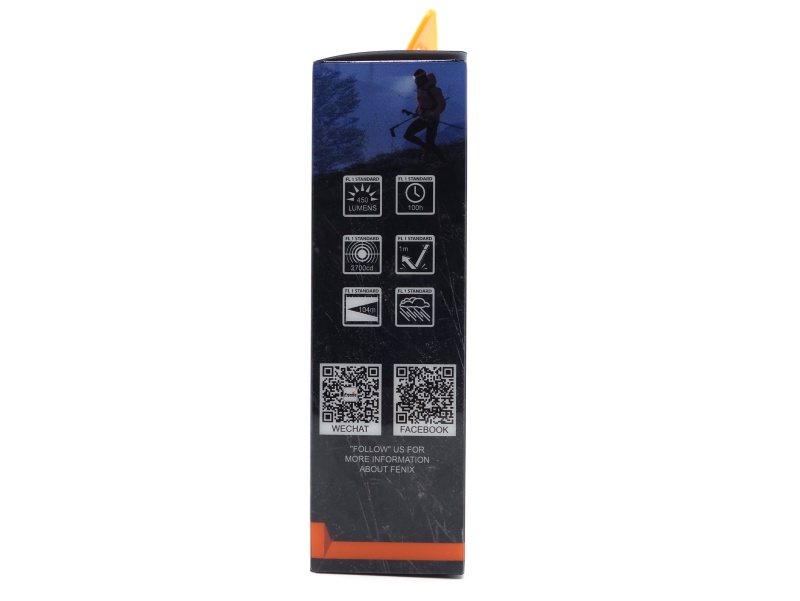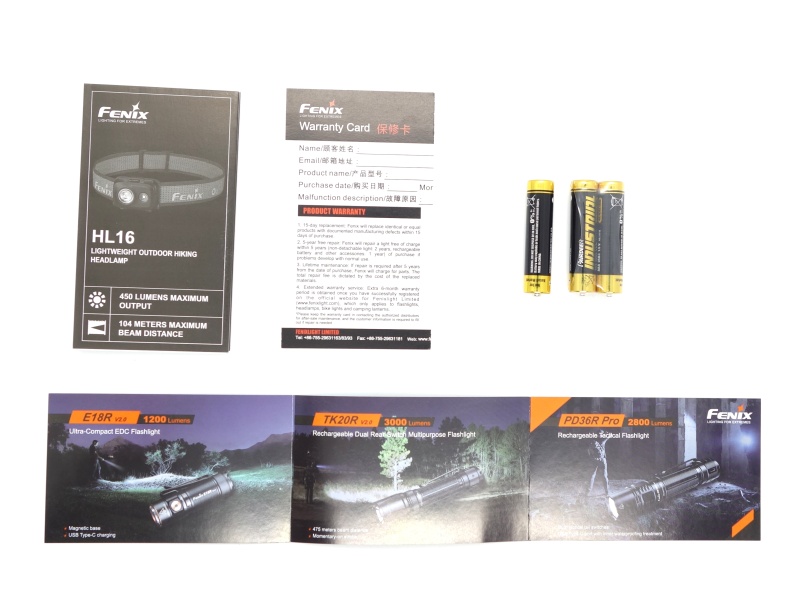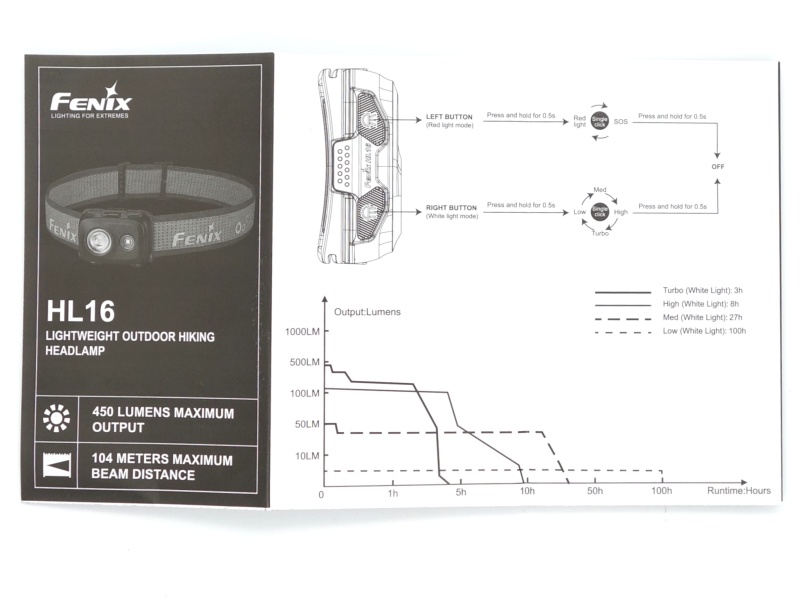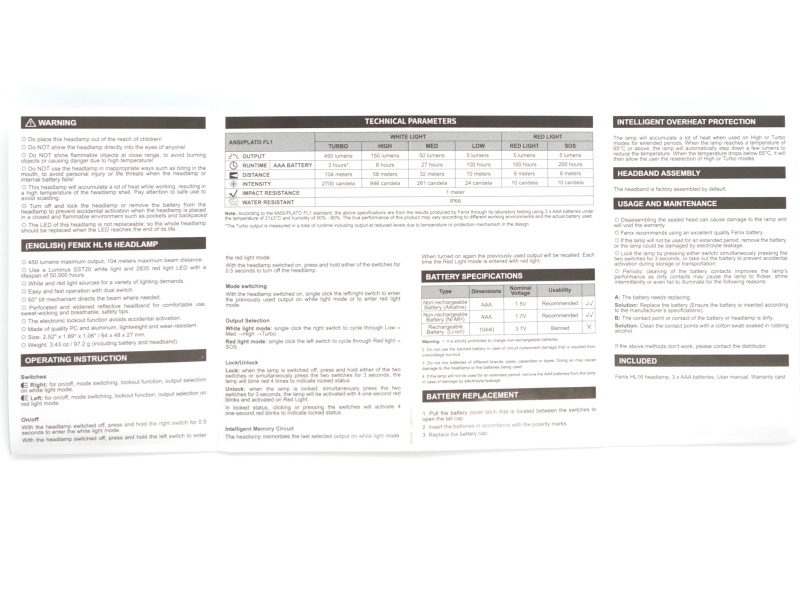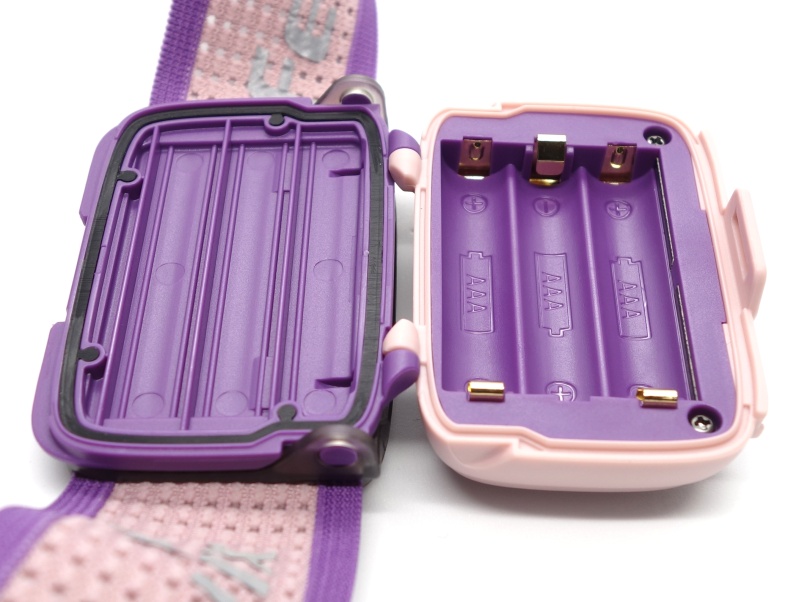Fenix HL16 Headlamp Review

Fenix HL16⌗
- Specifications
- Introduction
- Torch in use
- Build quality
- LED, bezel, lens, reflector and beam
- Size and comparison
- User interface
- Batteries and charging
- Performance
- Beamshots
- Conclusion
- Price
- Product page
Specifications⌗
| Brand/model | Fenix HL16 |
|---|---|
| LED | 1*Luminus SST20, 1*2835 Red |
| Maximum lumens | 450 lm |
| Maximum beam intensity | 2,700 cd |
| Maximum throw | 104 m |
| Battery | 3*AAA |
| Onboard charging | No |
| Material | Plastic |
| Modes | 4 |
| Blinkies | Red SOS |
| Reflector | TIR |
| Waterproof | IP65 |
| Review date | August 2023 |
Introduction⌗
The Fenix HL16 is a lightweight headlamp with a white emitter and a red emitter. It takes three AAA batteries.
I asked liteshop.com.au if I could review the Fenix HL16 to see if it would be suitable for running for several hours overnight.
liteshop.com.au kindly sent the Fenix HL16 for review. I have not been paid for this review nor have I held back my opinions of this torch.
Packaging⌗
The HL16 came in a plastic box with an image of the headlamp on the front and specifications on the back.
The following was included in the box:
- Fenix HL16
- 3*AAA Alkaline 1.5V batteries
- Warranty card
- User manual
Torch in use⌗
The Fenix HL16 feels comfortable on my head due to the wide elastic band.
I was able to adjust the headband to fit my large head. It also fit my toddlers head. She had a blast wearing it around the house!
I like how simple the user interface is. The white and red emitters each have their own button.
The headlamp feels secure when I go for a brisk walk. It does not bob up and down. The headband feels like a sweat band.
Reflective branding on the headband helps improve visibility at night.
Build quality⌗
The Fenix HL16 is made out of plastic. It feels well built.
I dropped the headlamp onto a hardwood floor from a distance of 1.5 metres and the headlamp did not break. The batteries flew out after the first two drops but they remained secure when I closed the battery compartment properly.
By default the white light points straight ahead. I find myself adjusting the angle of the headlamp to point it slightly down so that I can see the ground without bending my neck.
The angle can be adjusted up to 60 degrees.
The plastic clip for adjusting the angle of the headlamp or for opening the battery compartment feels strong.
There is a seal for the batteries to help improve water resistance.
I like how the battery compartment has cut-outs to guide each AAA battery when inserting them. That said, I was still able to insert a AAA battery backward by mistake.
There are two screws holding the battery compartment to the front of the headlamp. I was able to remove the screws and pry the battery compartment out without damaging the plastic. It popped out.
I removed four more screws but the driver appears to be stuck to the battery compartment.
It is nice to see some programming pads on the driver.
LED, bezel, lens, reflector and beam⌗
The Fenix HL16 has a white Luminus SST20 emitter with a TIR optic and a pebbled reflector to provide a throwy beam with a little bit of spill.
The red emitter has a small lens to protect it. It essentially a mule and produces a floody beam with very little throw.
CCT, CRI, and duv⌗
I have taken Correlated Colour Temperature (CCT) and Colour Rendering Index (CRI, RA of R1-R8) measurements with the torch positioned half a metre away from an Opple Light Master Pro III (G3).
The CCT is around 5290K. The CRI is around 61.
The Delta u, v is positive (green).
The white beam has a narrow white hot spot with a hint of green. There is very little spill due to the TIR optic. The spill has a hint of purple on Turbo.
The red beam is very floody.
| Mode | CCT (K) | CRI (Ra) | x | y | Duv |
|---|---|---|---|---|---|
| Low | 5173 | 59.2 | 0.3423 | 0.3828 | 0.0160 |
| Med | 5262 | 61.4 | 0.3394 | 0.3767 | 0.0144 |
| High | 5296 | 62.4 | 0.3383 | 0.3734 | 0.0133 |
| Turbo | 5430 | 63.5 | 0.3344 | 0.3664 | 0.0116 |
Calculate Duv from CIE 1931 xy coordinates
Dimensions and size comparison⌗
Dimensions⌗
I took the following measurements using a digital caliper.
| Measurement | Unit (mm) |
|---|---|
| Length | 64.2 |
| Height | 47.2 |
| Width | 27.8 |
Weight⌗
I took the following measurements using a digital scale.
| Weight | Unit (g) |
|---|---|
| Torch | 43.45 |
| Headband | 19.10 |
| Batteries | 38.03 |
| Torch with headband | 62.55 |
| Torch with headband and batteries | 100.58 |
Three eneloop pro AAA 1.2V Ni-MH 900mAh cells were measured.
Size comparison with its competition⌗
From left to right: Fenix HL16, Arlec 100 Lumen Headlamp
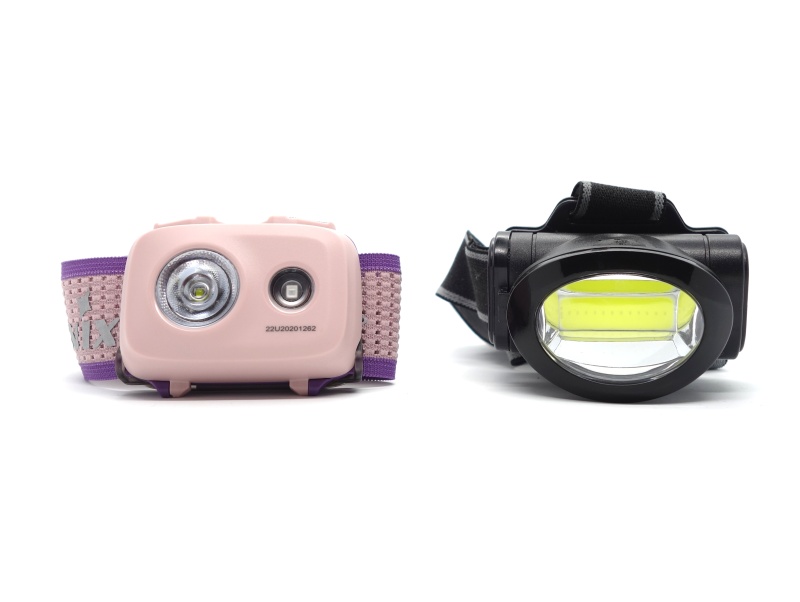
User interface⌗
The Fenix HL16 has two buttons. A left button controls the red light, while the right button controls the white light. Both buttons can be used at the same time to lock the headlamp.
| State | Action | Result |
|---|---|---|
| Off | Press and hold the right button for 0.5 seconds | White light on (mode memory) |
| White light on | Click the right button | Cycle (Low, Med, High, Turbo) |
| White light on | Press and hold the right button for 0.5 seconds | Off |
| White light on | Click the left button | White light off, Red light on |
| Off | Press and hold the left button for 0.5 seconds | Red light on |
| Red light on | Click the left button | Cycle (Red, Red SOS) |
| Red light on | Press and hold the left button for 0.5 seconds | Off |
| Red light on | Click the right button | White light on (mode memory), Red light off |
| Any | Press and hold the left or right button for 3 seconds | Lock-out |
| Lock-out | Click any button | Red light flashes 4 times to confirm lock-out is enabled |
| Lock-out | Press and hold both buttons for 3 seconds | Red light flashes 4 times and turns on to confirm lock-out is disabled |
SOS⌗
The red emitter has an SOS mode. SOS is not memorised.
Low voltage protection⌗
Low voltage protection does not appear to be present. The light turned off at 1.77V and the current dropped to less than 1mA.
The light output dropped to an unusable level as the voltage dropped.
I tested low voltage protection by connecting the headlamp to a bench power supply and then by lowering the voltage from 4.5V to 0V for three AAA cells.
PWM⌗
I did not notice any visible PWM (flickering).
What I like about the UI⌗
- Simple to use.
- Two buttons makes it so much easier to control two emitters.
What could be improved⌗
- It would be nice if the red emitter had more modes (e.g. Low, Med, High, Turbo).
- Is an SOS signal effective with a red light? I think that a white light would throw further and be better at getting attention.
Batteries and charging⌗
Battery⌗
The headlamp came with 3*AAA Alkaline batteries. I put them in a safe location and decided to use rechargeable AAA Ni-MH batteries.
| Size | Chemistry | Voltage | Recommended |
|---|---|---|---|
| AAA | Ni-MH | 1.2V | Yes |
| AAA | Alkaline | 1.5V | Yes |
| 10440 | Li-ion | 3.7V | No. Banned. |
Charging⌗
There is no onboard charging.
Built-in charging would be nice but it may not be simple to implement with three AAA cells connected in series.
Performance⌗
Specifications from the manual:
| ANSI / PLATO-FL1 | Turbo | High | Med | Low | Red | Red SOS |
|---|---|---|---|---|---|---|
| Output (lumens) | 450 | 150 | 50 | 5 | 5 | 5 |
| Runtime | 3h | 8h | 27h | 100h | 100h | 200h |
| Beam Distance (metres) | 104 | 58 | 32 | 10 | 6 | 6 |
| Beam Intensity (cd) | 2,700 | 846 | 261 | 24 | 10 | 10 |
It is nice how Fenix have included a runtime graph for the white modes in the user manual so that we can see how the headlamp will perform over time.
The user manual has a disclaimer for the Turbo runtime: “The Turbo output is measured in a total of runtime including output at reduced levels due to temperature or protection mechanism in the design”. Fenix should mention the expected runtime duration where the output drops below 10% of the initial output at 30 seconds (i.e. adhere to ANSI/PLATO FL1).
Fenix used 3*AAA batteries for testing. The type used (Alkaline or Ni-MH) was not mentioned in the user manual.
I used three eneloop pro AAA 1.2V Ni-MH 900mAh cells for the following tests.
Lumen measurements⌗
| LED | Mode | Specs | Lumens @turn on | Lumens @30 sec | Lumens @10 min |
|---|---|---|---|---|---|
| Red | Red | 5 | 9 | 7 | 7 |
| White | Low | 5 | 5 | 5 | 5 |
| White | Med | 50 | 46 | 46 | 45 |
| White | High | 150 | 153 | 149 | 146 |
| White | Turbo | 450 | 459 | 436 | 284 |
Standby drain⌗
2.9 µA
Runtime graphs⌗
I used my own DIY lumen tube with a TSL2591 sensor and forked bmengineer’s project RuTiTe to record runtimes.
Note: Lumen measurements may be off by 10% with my DIY lumen tube.
The room temperature was approximately 10 C.
Runtime⌗
Here is a summary of the runtime results:
| Mode | User manual | Runtime | Turn off | Final voltage |
|---|---|---|---|---|
| Turbo | 3h | 1h 37min 52s | 2h 38min 23s | 1.08, 0.82, 0.81 |
| High | 8h | 3h 47min 32s | 4h 54min 13s | 1.05, 1.13, 1.09 |
| Med | 27h | 16h 17min 33s | 16h 59min 52s | 1.12, 1.14, 1.08 |
| Low | 100h | 10min+ | 10min+ | |
| Red | 200h | 10min+ | 10min+ |
“Runtime” is the time until the output reduces to 10% of the output at 30 seconds (as per the ANSI/PLATO FL1 2019 Standard).
“Turn off” is the time until my DIY lumen tube no longer detects more than 1 lumen.
“+” indicates that the light remained on after recording had stopped.
I stopped recording after 10 minutes for the Low and Red mode.
After the light turned off during a runtime test for Turbo, I was able to turn the light back on but it would only enter the Low mode.
The runtime was consistently lower than expected with three eneloop pro AAA 1.2V Ni-MH 900mAh cells. Fenix might have used Alkaline batteries for testing.
Throw⌗
I took lux measurements with a UNI-T UT383BT at 30 seconds. Low and Med were measured at one metre. High and Turbo were measured at five metres.
| Mode | Specs (cd) | Specs (m) | Candela measured (cd) | Distance (m) |
|---|---|---|---|---|
| Low | 24 | 10 | 23 | 9 |
| Med | 261 | 32 | 300 | 34 |
| High | 846 | 58 | 825 | 57 |
| Turbo | 2,700 | 104 | 2,725 | 104 |
Beamshots⌗
I went to a local park and aimed the Fenix HL16 at a tree 70 metres away while using High.
Beamshots were taken using a Sony RX100M2 using 3.2", f3.2, ISO 100, 5000K WB.
Fenix HL16 (Turbo)⌗
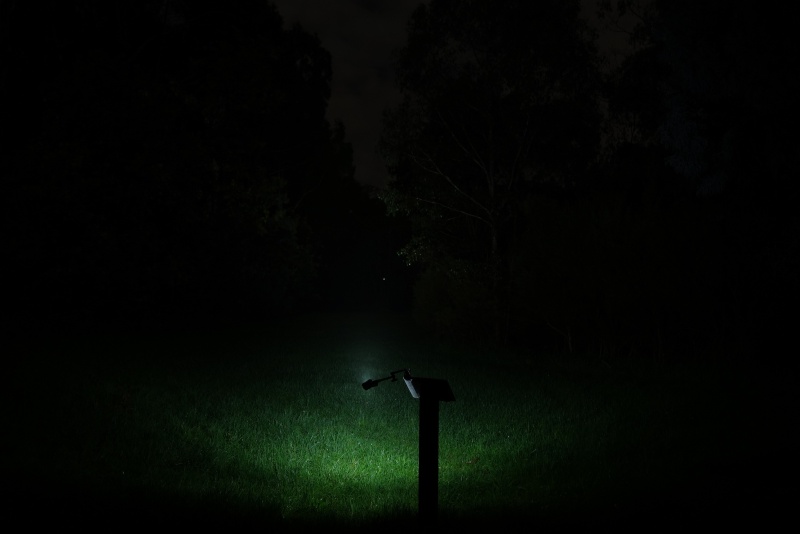
ZebraLight H53Fc N (H1)⌗

Acebeam H16 Gray (Turbo)⌗

Cyansky HS5R⌗

I later visited a playground and aimed the headlamp at a big apple approximately 2 meters away while using the red emitter.
Red beamshots were taken using a Sony RX100M2 using 1/2.5", f3.2, ISO 800, 5000K WB.
Fenix HL16 (Red)⌗

ZebraLight H502pr⌗

Cyansky HS5R⌗

Cyansky HS6R⌗

Conclusion⌗
The Fenix HL16 headlamp is a comfortable and lightweight headlamp.
The build quality is pretty good. It feels much more durable compared to the AU$5 Arlec headlamp that I picked up from Bunnings.
I personally would prefer it if the white beam was floodier so that I can see to the sides more easily. A higher CRI would be nice too. The throwy beam may be useful for seeing what is up ahead while running.
The red beam is very floody and dim. It may be ok for walking around slowly at night. It is probably bright enough to ruin night vision for other people if they look directly at the headlamp.
I am a bit disappointed with the runtime results. The three AAA Ni-MH batteries that I used may have impacted the performance. It would be nice if runtime estimates were provided for both Alkaline and Ni-MH AAA batteries. I never use Alkaline batteries in my torches because they may eventually leak.
Kudos to Fenix for including a runtime graph in the user manual! Not many manufacturers do that.
The headlamp manages to maintain a little over 30 lumens for more than 15 hours with three AAA Ni-MH batteries. If this amount of light is sufficient then this might be the headlamp for you.
The Fenix HL16 is available in pink, green and black.
Pros:⌗
- Good build quality.
- Comfortable headband.
- Simple UI.
- Throwy beam.
- Red and white lights.
Cons:⌗
- Low CRI.
- Red SOS.
- No built-in charging.
Price⌗
The Fenix HL16 is AU$54.95 from liteshop.com.au at the time of writing.
The Acebeam H16 is about 27 grams lighter with a battery. It has a similar headband but it comes with a USB-C rechargeable 14500 Li-ion battery. It is AU$74.95 from liteshop.com.au at the time of writing.
Product page⌗
Promo code: SG9IP8YKT5PI
liteshop.com.au affiliate link
I may earn a commission if you use an affiliate link or a promo code. This will help fund future torch reviews and tutorials.



